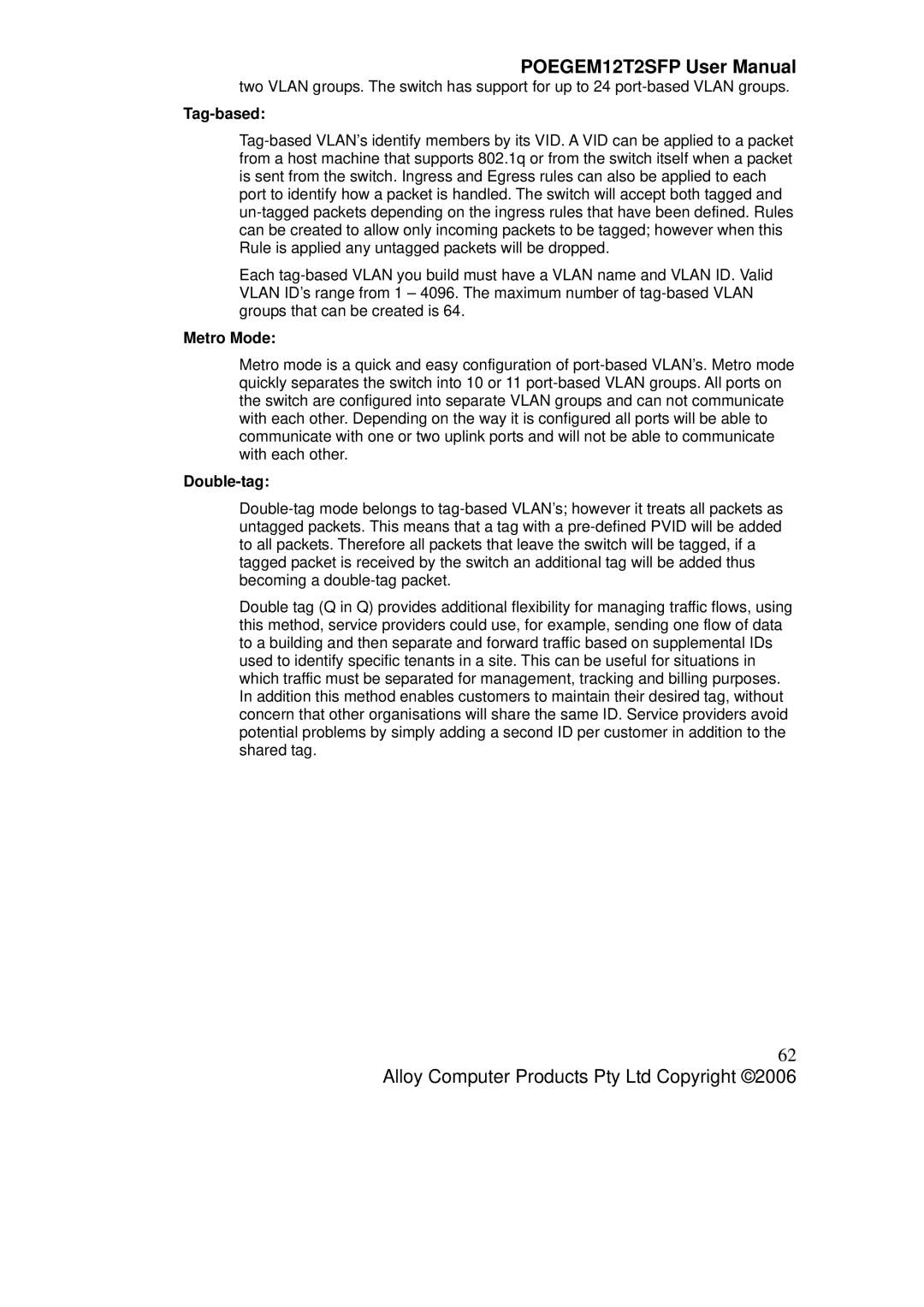POEGEM12T2SFP User Manual
two VLAN groups. The switch has support for up to 24 port-based VLAN groups.
Tag-based:
Tag-based VLAN’s identify members by its VID. A VID can be applied to a packet from a host machine that supports 802.1q or from the switch itself when a packet is sent from the switch. Ingress and Egress rules can also be applied to each port to identify how a packet is handled. The switch will accept both tagged and un-tagged packets depending on the ingress rules that have been defined. Rules can be created to allow only incoming packets to be tagged; however when this Rule is applied any untagged packets will be dropped.
Each tag-based VLAN you build must have a VLAN name and VLAN ID. Valid VLAN ID’s range from 1 – 4096. The maximum number of tag-based VLAN groups that can be created is 64.
Metro Mode:
Metro mode is a quick and easy configuration of port-based VLAN’s. Metro mode quickly separates the switch into 10 or 11 port-based VLAN groups. All ports on the switch are configured into separate VLAN groups and can not communicate with each other. Depending on the way it is configured all ports will be able to communicate with one or two uplink ports and will not be able to communicate with each other.
Double-tag:
Double-tag mode belongs to tag-based VLAN’s; however it treats all packets as untagged packets. This means that a tag with a pre-defined PVID will be added to all packets. Therefore all packets that leave the switch will be tagged, if a tagged packet is received by the switch an additional tag will be added thus becoming a double-tag packet.
Double tag (Q in Q) provides additional flexibility for managing traffic flows, using this method, service providers could use, for example, sending one flow of data to a building and then separate and forward traffic based on supplemental IDs used to identify specific tenants in a site. This can be useful for situations in which traffic must be separated for management, tracking and billing purposes. In addition this method enables customers to maintain their desired tag, without concern that other organisations will share the same ID. Service providers avoid potential problems by simply adding a second ID per customer in addition to the shared tag.
62
Alloy Computer Products Pty Ltd Copyright ©2006
